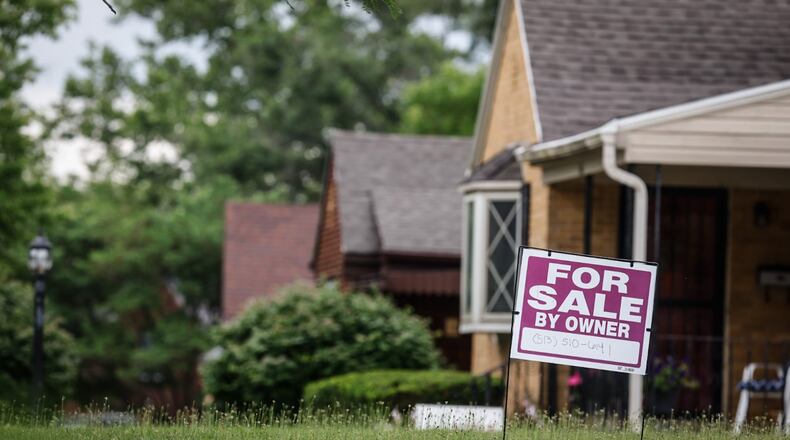This is a challenging time to be house hunting, and while tight inventories can benefit sellers, some homeowners may be holding off on putting their properties up for sale because they don’t want to try to find a new home in this tight market.
“Decline in inventory is a real concern for a lot of reasons,” said Greg Blatt, president of Dayton Realtors.
The supply of homes for sale in the Dayton metro area declined by slightly more than 20% in May, compared to May 2022, according to a Realtor.com analysis.
The report says just seven of the other 100 largest U.S. urban areas saw a sharper decrease in housing availability during that time.
The largest declines occurred in San Jose, California (-35.3%), Hartford, Connecticut (-26%) and Milwaukee, Wisconsin (-23.4%).
Across the nation, the inventory of homes for sale has increased by about 20% during that timeframe.
The Dayton region had about 668 homes for sale in May, the report says. Back in May 2019, there were about 2,240 local homes on the market.
In the Dayton area, the median listing price has risen to $234,950. The median listing price was up nearly 7%, year-over-year, per square foot.
Realtor.com noted that the Dayton region was the most affordable urban area on its list.
Some people may interpret the decrease in housing supply as a sign that homes are selling fast and people are moving into the region.
But leaders with the Home Builders Association Dayton have a very different viewpoint about this.
The shrinking inventory is concerning and the region is going to struggle to attract new businesses and economic development if there are no places for workers to live, said John Morris, executive director of the association.
“While Dayton may continue to rank well in terms of housing affordability, our communities must do more to encourage and attract more home building,” he said.
Local communities should offer new and greater incentives to homebuilders, Morris said, and they also should revise and relax zoning requirements that severely restrict where and what type of housing can be constructed.
As an example, Morris said that some communities require that new homes be built on 80-foot-wide lots when 50-foot lots would work perfectly well and would be much cheaper — probably tens of thousands of dollars less.
Blatt, with Dayton Realtors, said the housing shortage is hurting the economy, because home sales are a big contributor.
The National Association of Realtors estimates that every home sale in Ohio on average has an economic impact of about $76,000.
There is a high demand for housing in the Dayton region because the cost of living is very affordable and home prices are much lower than other places across the country, Blatt said.
Blatt said the lack of new homes and the shrinking supply is stressful for buyers because they have to deal with a lot of competition.
He also said the current environment can be stressful for sellers, because they often get so many offers and it’s not always easy to tell which are likely to pan out.
He said bidding wars can be a problem because they can lead to issues with financing if there are gaps between the appraisals and the offers.
Blatt said the Dayton region needs new housing, but homebuilders face significant obstacles.
He said local communities should closely scrutinize their zoning codes to identify and correct inefficiencies that make it difficult, costly and time-consuming for homebuilders to pursue new projects.
Homebuilders have no control over material costs and borrowing costs, but communities can help them out by streamlining the new construction and zoning process, he said.
Three of Ohio’s other major urban areas have seen their housing supplies increase in the last year.
Columbus’ inventory increased 7%, Toledo’s grew 6% increase and Cincinnati’s grew by 3%.
Akron’s home listings shrank by 10%, while Cleveland’s dipped 1%.
About the Author

